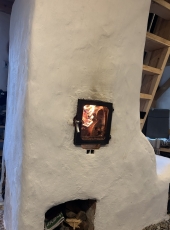
 2
2




 3
3




April Wickes wrote:Y I tried to ask this of the HeatGuard people, whether it required pre-rigidizing or functioned itself as a rigidizer, but they never got back to me.
I don't own the plants, they own me.
 2
2




 4
4




![Filename: fiberboard.png
Description: [Thumbnail for fiberboard.png]](/t/192518/a/192352/fiberboard.png)
 2
2




 He recommended Mount Savage as a supplier thereof.
He recommended Mount Savage as a supplier thereof.
 2
2




I don't own the plants, they own me.
 2
2




 2
2




![Filename: fiberboard2.png
Description: [Thumbnail for fiberboard2.png]](/t/192518/a/192360/fiberboard2.png)
 2
2




I don't own the plants, they own me.
 3
3




 1
1




 1
1




April Wickes wrote:
System size 140 mm, 5.5” (going into 6” chimney and just trying to come up with a close match to existing materials and bricks)
Firebox 11” wide by 9” tall by 15” deep (279x228x381mm)
Port 1.68”x6.8” (43x173mm)
AFTERBURNER An octagon of internal diameter 5.88” facet to facet (150mm), external diameter 7.88,” total internal area 28.64 in2 (18,477 mm) and external area 51.44 in2 (33,187 mm).
TOP BOX HEIGHT
To leave 166% CSA in negative space around this octagon, I get a total top box height of about 8.25” (209mm). Right??
April Wickes wrote:
And then the EXIT PORT. Peter’s prototype, as I understand it, would give me a slit all the way across the 11” width of the top box, 2.39” (61mm) deep. I could do that. My only hesitation, as I look at the way it would interact with the bell I have planned, is that it would throw a whole lot of heat on one particular area of the upper bell, which would be set back nearly to that port. That spot could very well get enough concentrated heat to crack the flue liner I’m using. I’d feel safer about that if I could run the gases straight out the back, which to keep 1.1 CSA as per Peter’s proportion of exit port would mean leaving the back almost entirely open – two wunky shapes of 7.04” open height, and just a low 1.2” high restricting wall at the bottom.
April Wickes wrote:
Speaking of, I will probably do a bell-less mockup/ green binder burn-off/ rigidizer curing pre-fire out in my driveway fairly soon here. It probably needs some sort of chimney to test at all, right? Any ideas on getting an oddly shaped exit port, whether a long skinny top port or a wunky back port, to join a chimney? Should I just cob it?
I don't own the plants, they own me.








April Wickes wrote:We're looking at calculating the negative space of the top box off of *TUBE* interior CSA instead of *SYSTEM CSA*?? That would certainly account for the discrepancy!
I don't own the plants, they own me.
















 2
2




April Wickes wrote:So now I’m well and truly confused.
regards, Peter
 2
2




 1
1




 2
2




 1
1




April Wickes wrote:** I do note that changing that proportion to 160% of system CSA makes the top box almost exactly the same size as the exterior diameter of the 1" thick tube. This might present a challenge for some configurations.
regards, Peter
 1
1




 2
2




April Wickes wrote:So on a 140mm system with a tube of *exterior* diameter 200 mm (interior 150, 115% of system size), a top box with 160% system CSA negative space, minus the complete tube, would be 280 wide by 201 high -- just the height of the thicker tube.

regards, Peter




 1
1




April Wickes wrote:So... Are we shooting for 160% system CSA then? Or 185%? Which number do you like best?
regards, Peter
 4
4




 2
2




None of us are getting out of this alive, so try to be kind.
 1
1




 1
1




 1
1






None of us are getting out of this alive, so try to be kind.
 1
1




 1
1




Fox James wrote:Like I say, ceramic tube is available in the States
I don't own the plants, they own me.
 1
1




 1
1




April Wickes wrote:
Fabrication of a tube from CFB has been ... sort of successful? The glue seems to have somewhat less adhesive power than a chewed up paper spitball and took weeks to dry. I haven't test fired it yet. Once the snow melts I thought I'd start a new thread on the build itself. But meanwhile, don't be coy about your idea! What have you got?
 1
1








April Wickes wrote:
Scott,
Yes, the higher grade of CFB from Ceramaterials for the riser ( https://www.ceramaterials.com/product/ceramic-fiber-board-high-density/ ), and the only "glue" they had available (https://www.ceramaterials.com/product/ceramic-fiberboard-glue/ ). I followed their directions, which were to wet the board with water, then apply, then clamp. The instructions seemed to suggest it would be dry within 48 hours but it was more like two weeks and the water seemed to weaken the board itself. "Sort of successful" means it is no longer falling to pieces when I pick it up gently, but it certainly was at first and I have not yet test fired it. It doesn't seem very sturdy.
Your diagram is more or less exactly what I did, using a stainless hose clamp to hold it together. Since any exterior band must still be in the path of exit gases and temps, I'm dubious about it holding up. I have been able to remove the clamp from the tube without the tube falling apart but I'm not sure the tube alone will hold up either. Maybe it's sturdier after firing? I certainly hope so.
 1
1




None of us are getting out of this alive, so try to be kind.





| I agree. Here's the link: http://stoves2.com |





